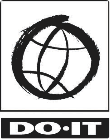Symposium One: Effective Models, Frameworks, and Approaches (2017)
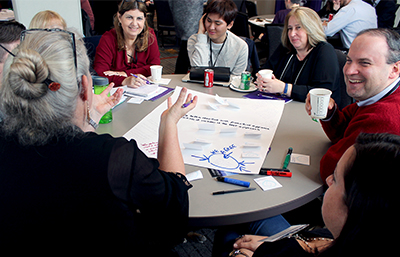
Proceedings from the Ed-ICT International Network: Disabled students, ICT, post-compulsory education & employment: In search of new solutions
March 14-15, 2017
University of Washington
Seattle, Washington
Funded for three years by The Leverhulme Trust, this International Network is co-organized by Jane Seale (The Open University, UK); Tali Heiman (Open University, Israel); Sheryl Burgstahler (University of Washington, US); Catherine Fichten (Dawson College, Canada) and Björn Fisseler (FernUniversität, Germany).
The Ed-ICT International network is exploring the role that information and communication technologies (ICTs)—including computers, assistive technologies, online learning, social networking sites— play or could play in causing the disadvantage or removing the disadvantage that students with disabilities experience in post-compulsory/post-secondary education generally and specifically in relation to social, emotional, and educational outcomes.
The network also examines the practices required of educators and other stakeholders to mediate successful and supportive relationships between learners with disabilities and ICT. The Network is working to
- synthesize and compare the research evidence that is available across the five countries regarding the relationship between students with disabilities, ICTs and post-compulsory education;
- construct theoretical explanations for why ICTs have not yet brought about the reductions in discrimination, disadvantage and exclusion that were predicted when equality and discrimination related laws were published across the five countries; and
- provide new perspectives about potential future solutions regarding how post-compulsory education institutions can better use ICTs to remove the ongoing problems of disadvantage and exclusion of students with disabilities.
In order to meet these objectives five international symposia will be held over three years with five broad themes:
- Effective models, frameworks, and approaches
- Stakeholder roles
- New designs
- Effective practices
- New solutions
For each symposium, 20 local stakeholders from any or all of the following groups will be invited to participate:
- students with disabilities;
- faculty (lecturers, professors);
- professionals responsible for support services for students with disabilities (e.g., access technologists) in post-compulsory education;
- professionals responsible for faculty/staff development;
- campus information technology staff;
- digital textbook and resource publishers;
- other individuals who work to support the academic success of students with disabilities; and
- senior institutional managers and administrators.
About the Symposium
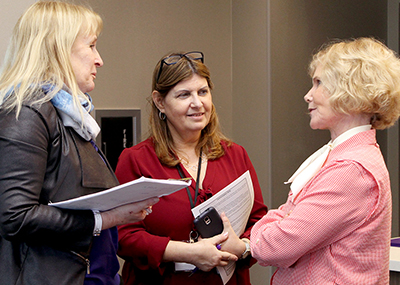
Research and practice literature within the fields of accessibility, disability and technology frequently identifies that practice within post-compulsory/post-secondary education institutions need to change or improve in order to ensure the full inclusion of students with disabilities. It is also not uncommon for this literature to point to specific models, frameworks or approaches (for example, universal design) that might inform such a transformation of practice. The premise of this first symposium is that we need more in-depth questioning and examination of the value and efficacy of such models, frameworks or approaches. In this symposium, through individual presentations and a range of group activities we applied a critical lens to the fields that study students with disabilities, ICT, post-compulsory/post-secondary education and employment. Our goal was to seek answers to the following questions:
- What evidence is there that universal design is effective in various applications and contexts and with a variety of stakeholders? Can this model inform the practice of all relevant stakeholders within post-compulsory education?
- What other models, frameworks or approaches exist and which stakeholders are they aimed at?
- How do various models, frameworks or approaches translate into practice?
- Do we need to develop new models, frameworks or approaches? If so, for what applications and stakeholder groups?
- How can models, frameworks or approaches transform practice? Are there alternative conceptual tools to help stakeholders utilize technologies with students with disabilities in more inclusive and accessible ways?
Symposium Agenda
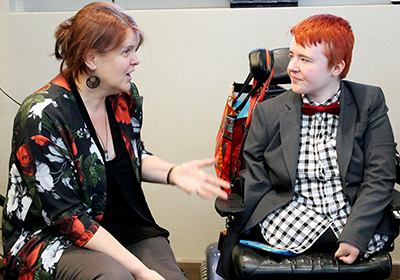
Tuesday, March 14
What current models, frameworks or approaches exist and how useful are they?
8:30 – 9:00 am
Registration
9:00 – 9:15 am
Welcome and Introduction
Sheryl Burgstahler (University of Washington, United States) and other members of the Ed-ICR leadership team Jane Seale (ED-ICT network leader, The Open University, UK); Tali Heiman (Open University, Israel); Catherine Fichten (Dawson College, Canada) and Björn Fisseler (FernUniversität, Germany)
9:15 – 10:00 am
Introductory Ice-Breaker Activity
Sheryl will lead a 5-10 minute engagement exercise that sheds light on the experience of disability
Jane will follow up with an activity that encourages people to share in pairs or threes one thing that they do well in relation to support and delivery of ICT for students with disabilities and one thing they would like to do better
10:00 – 11:00 am
Presentation: Setting the Scene
An overview of models in the field and the questions we need to ask of them
By Jane Seale
Paper will be circulated prior to meeting
Title: What models, approaches or frameworks exist in the field of disability, ICT (information and communication technology) and post-secondary education; are they successful in transforming the support and delivery of ICT for disabled students or do we need new ones?
11:30 – 12:45 pm
International Panel
A panel discussion with one person from each participating country: Tali Heiman (Israel); Alice Havel (Canada); Chetz Colwell (UK); Dan Comden (US) and Christian Buehler (Germany)
Title: What typical models, approaches or frameworks are used in each country for supporting and delivering ICT for disabled students in post-secondary education and how successful are they?
12:45 – 1:45 pm
Lunch and Networking
1:45 – 2:45 pm
Presentation
Applying models in practice: an individual perspective
By Sheryl Burgstahler
Title: How design frameworks and models have informed her work
2:45 – 3:45 pm
Round-Table Discussions
Small group discussions focusing on what models, frameworks or approaches they use in their own practice, how they use them and the factors that influence the value and utility of the models, frameworks or approaches
3:45 – 4:30 pm
Plenary
Led by Jane
Overview of discussions
Wednesday, March 15
Do we need new models, frameworks or approaches or just better evidence for our existing models--what are the implications for research?
8:30 – 9:00 am
Registration, Networking
9:00 – 9:30 am
Summary and Reflection
Led by Jane Seale, Leader of the Ed-ICT Network
9:30 – 10:15 am
Participant Panel Discussion: Design Issues
Facilitated by Sheryl
What are the design issues regarding ICT with respect to the institution and students with disabilities in post-secondary education? …and how if at all do models and frameworks contribute to resolving those issues?
10:15 – 11:00 am
Participant Panel Discussion: Transition Issues
Facilitated by Sheryl
What are the ICT issues related to transition to employment for students with disabilities? …and how if at all do models and frameworks contribute to resolving those issues?
Participant Panel: Student Issues 11:30 – 12:30 pm
Facilitated by Sheryl
Students with disabilities will share their experiences of how the support and delivery of ICT has impacted on their learning and transitions between education levels and to employment 11:30-12:30
12:30 – 1:30 pm
Lunch and Networking
13:30 – 3:00 pm
World Café
Led by Jane
At each of the tables Jane will place a flip chart with a question or statement (derived from previous day and half discussions) and ask each group to respond to that by mind-mapping their response to the question on the flip-chart. (pens and post-its provided)
The groups will rotate around the tables- so that they can add their own responses to the original question and respond to other peoples’ responses if they wish. The mind-map expands with each rotation.
Questions will focus on what research is needed to resolve the issues highlighted in relation to models and frameworks; what is needed to move practice forward and how research and practice might inform one another.
3:00 – 3:45 pm
Plenary
Led by Jane
Overview of world café outputs and discussion on where to next regarding research plans for the group.
Presentation Summaries
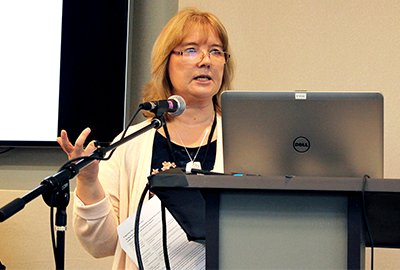
What Models, Approaches Or Frameworks Exist In The Field Of Disability, ICT, And Post-Secondary Education; Are They Successful In Transforming The Support And Delivery Of ICT For Disabled Students Or Do We Need New Ones?
By Jane Seale, The Open University, United Kingdom
The Leverhulme Trust has funded the International Network on ICT, Disability, Post-secondary Education and Employment (Ed-ICT) to find areas of research related to the network’s focus areas, specifically, the role that information and communication technologies (ICTs)—including computers, mobile devices, assistive technologies, online learning, and social networking sites—play or could play in creating barriers and mitigating disadvantages that students with disabilities experience in post-compulsory/post-secondary education both generally and specifically in relation to social, emotional and educational outcomes.
Practitioners in post-secondary education generally know they need to be more inclusive in their educational practices; however, awareness doesn’t always result in successful practice. Models and frameworks can work as tools to guide practitioners, as long as we are critical of these models and frameworks.
In my paper of the same name as this presentation, I focus on nine different models or frameworks, most of which focus on accessibility. All fall within or across the following three areas:
- Micro Level—A focus on practices involved in making all resources and activities accessible (e.g., Universal Design, the Holistic Model)
- Meso Level—A focus on the delivery of services within an institution that play a role in promoting the use of supportive ICTs and contribute to successful educational and employment outcomes (e.g., Staff Development Model for Inclusive Learning and Teaching)
- Macro Level—A focus on the institution where those services and practices take place, including the internal and external factors that influence institutional development and organization (e.g., The Model of Professionalism)
Furthermore, we must ask how these models and frameworks transform practice. How valid and efficacious are these models and frameworks? Have we carefully examined the validity and efficacy or are we blindly following others? Have we considered all options?
All models and frameworks should be carefully examined for validity and efficacy, including the writings and work that underpin each model. For validity, we can ask the following questions:
- How were the models or frameworks derived?
- What evidence is there that they have improved practice or outcomes for students with disabilities?
- For efficacy, we can ask the following questions:
- How detailed are the models or frameworks- what is their level of granularity?
- Have the models and frameworks been implemented in practice? How widely have they been implemented?
Often models are criticized in a superficial manner, or, transversely, are championed without acknowledging their weaknesses. Is there really only one model or framework that can do the job, or do we need multiple models and frameworks? And, are we applying the right critical lens when analyzing these models?
Questions and comments from the audience included the following:
- What research is already being done for models?
- Different backgrounds will create different models, and so if all models are coming from the same place, they may not fit for everyone.
- Can we have a large broad model that covers everything and then work backwards to cover the granularity as needed?
- The value of a model has to do with the hypothesis that it can be used to test—for these models, there hasn’t been much testing or practice.
- People don’t always know what model they are using.
- The cost of applying each model should be taken into account.
- Each model could have a range of options to be used for different problems.
- One problem can have multiple solutions—for example, all buildings can have ramps or all people could be given a flying wheelchair. Cost and ease of use must be considered.
- When choosing a model, unconscious bias should be reviewed. For example, a professor may think they know best about disability and choose a model based on their own experiences; however, it may be inappropriate for students with disabilities.
- What outcomes do we value? Policymakers and educators will want different outcomes and may value different results than other stakeholders.
- How are different researchers and practitioners considered in a model?
How Design Frameworks and Models Have Informed My Work
By Sheryl Burgstahler
At the University of Washington, we have two centers under Accessible Technology Services, the Access Technology Center funded specifically for the UW, and the DO-IT (Disabilities, Opportunities, Internetworking and Technology) Center, which is funded by the state and various national and international grants. Universal design (UD) informs much of my work. UD can be viewed as an attitude, a framework, a goal, and a process. UD values diversity, equity, and inclusion; promotes best practices; works proactively; and minimizes the need for further specialization or accommodations.
Universal design can be applied to physical spaces, instruction, services, and ICT. Universal design is defined as “the design of products and environments to be usable by all people, to the greatest extent possible, without the need for adaptation or specialized design.” (The Center for Universal Design). Software and web applications should be designed for use by individuals with disabilities, including those who use assistive technology. Accessible design strategies include keyboard-only design, alternative text, descriptive links, hierarchical structure, and captioned videos.
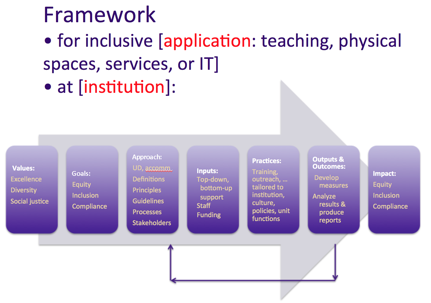
UD works as a framework as indicated in the following image that is described to the right.
Any application of the UD framework is built on key aspects of the environment in which it is being applied. These potentially include the following:
- Values: e.g., social justice model of disability; inclusion of diversity, equity, and inclusion
- Goals: e.g., equity, inclusion, compliance
- The Approach: e.g. universal design vs accommodations that rely on definitions, principles, guidelines, processes and stakeholders
- Inputs: e.g., those that are top down and those that are bottom-up; staffing levels, and funding
- Practices: e.g., training, outreach, etc., that is tailored to in the institution, culture, policies, and unit functions
- Outputs and Outcomes: that require developing measures, analyzing results, and writing reports
- Impacts: to include equity, inclusion, compliance as established with the original goals
Research on UD of ICT often employs a usability testing design approach. CAST has done research on the universal design of learning, although most of the research has been conducted at an elementary grade level and in language arts, with interventions not always tested with students with a wide variety of characteristics that include disabilities. In one chapter of the second edition of Universal Design in Higher Education: From Principles to Practice, research 19 studies of universal design of instruction at the postsecondary level are reported; most looked at the average success/satisfaction of students overall. DO-IT through a quasi-experimental design showed that post-secondary students with disabilities in classes with universal design for instruction-trained instructors earned grades closer to those of students without disabilities. Read more about the study here.
What ICT design should be addressed with UD, and what should be addressed with assistive technology and other accommodations is an ongoing question in the field of ICT?
Some of the questions and responses of the participants are captured below.
- What are the challenges in the future in terms of UD of learning?
Getting people to actually do it is the hardest part of the framework. Faculty and staff must be trained and have support, which requires time and funding. Many faculty members have not heard about UD or know it is an option for their teaching practices. - The EPUB (a file type) standard strongly supports accessibility for digital tools. However, disability resource services are not ready to deal with EPUB. What is the solution?
Disability resource services and IT departments need to work together to adopt new, powerful, and inclusive technology. - How do we get administrators and other stakeholders involved?
At the UW, in a top-down effort we secured the support of the chief information officer for our goal to improve IT accessibility campus-wide. We have also worked bottom-up by enlisting a volunteer group of IT Accessibility Liaisons representing different departments signed on to meet a few times a year, engage in discussions about accessibility, and promote accessibility in their units and beyond. However, much work remains to be done before IT is fully accessible to all of our students. - What is Washington State Policy #188?
It sets the expectation that all state agencies will develop, procure, and use IT that is accessible to everyone, including those with disabilities. Learn more about Policy #188 at ocio.wa.gov/policy/accessibility. - How can we test to make sure UD of learning is working?
It’s hard since it’s such a broad topic, and all testing will be very specific. We have many promising practices, but we don’t know if we can say they’re testing or research. - How do you work with third party vendors and accessibility?
Our most successful practice was when I asked to do a co-presentation with one of our main procurement people at a procurement conference. That got him very interested in accessibility, which led him to supporting more accessibility in our purchases.
Panel Presentation Summaries
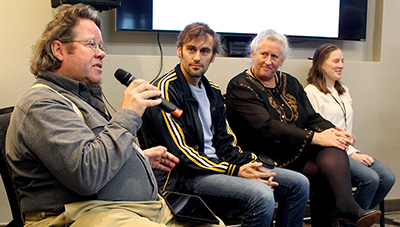
International Panel: What Typical Models, Approaches Or Frameworks Are Used In Each Country For Supporting And Delivering ICT For Disabled Students In Post-Secondary Education And How Successful Are They?
This panel included one representative from each participating country: Tali Heiman (Israel); Alice Havel (Canada); Chetz Colwell and Tim Coughlan (UK); Dan Comden (US); and Christian Buehler (Germany).
The Open University of Israel (Tali Heiman)
Accessibility in higher education has been improving over the last six years in Israel:
- In 2011, the equal rights regulation draft was written, which included accessibility adjustments to existing public places, higher education institutions, and higher education services.
- In 2015, the Israeli Internet regulations were passed on the basis of global accessibility guidelines (W3C).
- In 2016, the regulation of higher education institutions was legislated.
- In 2017, higher education institutions were required to make accessibility adjustments.
The Open University of Israel (OUI) has open admissions, integrated teaching methods (including technologies), and a distance learning method. Since 2011, universal design has been used on campus and online. Students with learning disabilities make up the largest group of students with disabilities. Varieties of ICT tools used by tutors include online course materials, collaborative tools, hardware such as SMART board, communication tools, social networking, and personal computer technologies in class.
The Road to ICTs is Paved with Good Intentions (Alice Havel)
In Quebec, post-secondary education is a provincial responsibility, and we must follow the Quebec Charter of Human Rights and Freedoms, which states “Every person has a right to full and equal recognition and exercise of his human rights and freedoms, without distinction, exclusion or preference based on… a handicap or the use of any means to palliate a handicap.”
If we had to choose models we use, they would be the Interactional Model; the Disability Creation Process, a local model that focuses on each person’s specific needs; and the Universal Design for Learning model. Our processes mainly follow the social model of disability, and we are always trying to remove barriers. We get funding for software for individual students; however, we are only beginning to tackle accessibility in web design and documents.
Our barriers to supporting and delivering ICTs to students with disabilities are weak legislation and enforcement, a lack of top-down institutional support, heavy responsibility on disability services, and insufficient knowledge on creating accessible products.
What Typical Models, Approaches or Frameworks are Used in the UK for Supporting and Delivering ICT for Disabled Students in Post -Compulsory Education and How Successful are They? (Chetz Colwell and Tim Coughlan)
External drivers for accessibility for people with disabilities from the government includes the Disabled Student Allowance, the Equality Act and Public Sector Equality Duty (2010), some practitioner organizations, WCAG 2.0, and a lack of transition planning to college. We have discourse for inclusive teaching, but most of that is not brought into practice. While we want to believe in the social model of disability, we’re still falling back on the medical model, where resources are allocated based on diagnoses. There is a difference between claims of compliance and reality. The UK focuses mostly on the Holistic, Contextualized, and Staff Development Models—however, many of these models are mainly used in technical fields.
The Open University UK is open to all students and has a history of creating and presenting courses. The Securing Greater Accessibility team has brought colleagues together from across faculties and professional units. The greatest challenges fall in the fact that we have tight production schedules, some outdated modules, a lack of strategic direction related to practical actions, and lower attainment of some students with disabilities (though no research into which groups and why). We plan on increasing attention to accessibility in module production, including creating a policy for accessibility, and we want to take on a range of academic research.
Higher Ed Accessible Technology in the US (Dan Comden)
At the pre-college level, technology is personalized, with specialized support and equipment for each student. However, in higher education, support is not individualized, and each person must advocate for himself or herself. ICT support comes from student services, information technology, and sometimes both. In student services, students can go to one disability services office and get a more personalized experience. However, they may not be getting what information technology (IT) support and technology tools they need to be successful. If a student can turn to IT, they get the tools they need to be successful; however, they may need to reach out to find more about what they need, and staff will need specialized technology training.
On the UW campus, we have the Access Technology Center, where we promote accessible computers and equipment across campus for students to use, as well as alternative media options. Processes at other schools are unique to their campuses.
What Typical Models, Approaches, or Frameworks are Used in Germany for Supporting and Delivering ICT for Disabled Students in Post- Compulsory Education and How Successful are They? (Christian Buehler)
Compulsory school lasts until children are 9 or 10; the years 11-13 are for specific job training. Further vocational training and university training can be pursued after an exam. Throughout these stages, education is a responsibility of the states, with each state handling its implementation differently. For people with disabilities, the states often follow a medical model with social benefits, with a strong focus on employment; companies who do not hire enough people with disabilities are penalized by the requirement to pay equalization fees.
People with disabilities get strong technical support during their education, including hardware tools as well as software tools and individual school and workplace adaptation. Under, Barrierefreiheit, infrastructure is considered barrier free accessible if they are “in a general manner, without special difficulty, principally without external help, findable, accessible, and usable by people with disabilities.” This is the state law for all universities. Similar to UD, Design for All is another concept that has come out of a focus on special users and diversity as a strength, where products are suitable for most potential users and are easily adaptable for different users.
Some of the questions and responses from the International Panel are included below.
What ideas would you steal from other countries?
- In the US, there is more enforcement of responsibility to support students with disabilities. Students can use the law to complain and force a university to meet their legal obligations.
- In the UK, things are often done quickly and from a top-down perspective.
- Other countries have a formal link between disability resources and information technology.
- We need more specialists in accessibility and ICT and a link between accommodations and mainstream technology.
How can we fix the faculty workload to encourage them to promote accessibility?
- We need a model that makes it clear who is responsible for what level of accessibility.
- We need to impress upon faculty that it is their responsibility to make their teaching accessible.
- My argument is that it is all our responsibility—if we share it, then each person adds a little bit of time to their workload, and since faculty are the ones creating the content, they should proactively make it accessible.
- We need to be teaching people to create accessible content at a younger age.
- Innovation and change efforts can sometimes lack consideration of accessibility; accessibility should always be part of the design process.
- A faculty member should take pride in their own teaching and want all students, including those with disabilities, to learn their material well.
- In our country, we have a lump sum of money given to each college for faculty to apply for in order to can take time out of their schedule to improve their courses—this can include accessibility projects.
What can we consider is “enough” for promoting accessibility?
- It will never be completed—it is a continual process that needs to be supported.
- Accessibility will be achieved when we don’t need accessibility specialists on campus, which probably won’t be happening any time soon.
Design Issues Panel: What are the Design Issues Regarding ICT with Respect to the Institution and Students with Disabilities in Post-Secondary Education? And How if at All Do Models and Frameworks Contribute to Resolving Those Issues?
This panel included Christian Vinten-Johansen, Penn State University; Jeffrey Bigham, Carnegie Mellon University; Cyndi Rowland, Utah State University; and Cynthia Bennett, University of Washington.
Below are some of the answers to the question: What can we do to help the next generation of faculty and IT creators promote and create with accessibility in mind?
- I include accessibility as a point in all of my classes, even if that class doesn’t have a main focus on accessibility.
- People with disabilities are often at the forefront of technology—this makes accessibility even more important to focus on.
- Accessibility is becoming more and more of a requirement when creating products. On the corporate side, businesses are having a hard time finding people who know about accessibility—we need students to learn about accessibility so they can fill these jobs.
- All of our faculty must work with an instructional designer—all designers and faculty must pass a course on accessibility.
- All new class content should be accessible and, as appropriate, include accessibility topics.
- There needs to be a stronger motivator for faculty to make accessible documents. Humanizing disability may encourage some people. Bringing people with disabilities into class to center the conversation around can help faculty and students think more about accessibility.
- Service providers should help facilitate the connections between faculty and students with disabilities.
Transition Issues Panel: What are the ICT Issues Related to Transition to Employment for Students with Disabilities? And How if at All Do Models and Frameworks Contribute to Resolving Those Issues?
This panel included Hadi Rangin, University of Washington; Megan Lawrence, Microsoft; Patricia Malik, University of Illinois; and Raja Kushalnagar, Gallaudet.
Below are some of the responses to the question, what should be considered for students who need ICT when transitioning to employment?
- It’s difficult to decide whether to disclose a disability or not—I often feel like this can change the conversation or make people uncomfortable. I think if the general public learned more about disability, people would be better equipped to talk about accommodations.
- People with disabilities often have two jobs—one job is their actual job, and the second is to raise awareness and educate their coworkers about their disability.
- People use social media to promote their own “personal brand”— having a bad social media presence can affect getting hired.
- The hiring process is often not fully accessible. These steps should be evaluated for accessibility, and alternative methods should be available as necessary.
- We need a diverse workforce—if we do not have accessible hiring processes, then we are selling our society short.
- In higher education, students are given accommodations. In the workplace, often an employee may have to fight for the tools they need. If a company has equipment that doesn’t work with accessible technology, what does the employee do?
- We host a networking event that invites companies and students with disabilities to come together to share a meal and learn more about each other. This can both help introduce employers to potential employees and break the stigma about disabilities.
- Choosing when to disclose an invisible disability is especially difficult.
- Some people with disabilities are often not able to get entry level positions since they are more labor intensive—this creates more barriers to hiring a person with a disability since they can’t get their foot in the door at an early stage.
- Working can often be very different from school—a person may not know exactly what they need to be successful and may need to learn what works for them.
- People with disabilities are more successful if they have allies in getting their accommodations. This might be their manager or someone in human resources (HR).
- In the tech field it can be even harder to find an appropriate sign language interpreter, since they may not know how to sign the technical language.
- We need to empower students to ask the right questions. Ask if there is a resource group or other groups that could be joined.
Following are some of the responses to the question, what IT barriers did you come into when you got your job?
- The hiring software didn’t work with my screen reader when I tried to apply to this job. Furthermore, it wasn’t that clear how to apply otherwise. I had to reach out to someone in the organization to help me apply for the job.
- Many pieces of technology on the job can be inaccessible, and sometimes it can require an accommodation and finding other solutions. Sometimes jobs will say they have a subcontractor creating the technology, so they can’t fix those issues. This then becomes a procurement problem.
- On my campus, we have an HR module about diversity, and that module isn’t accessible. My campus stated they got that module from a third party and therefore can’t fix it.
- We should be proactive in making sure we don’t purchase inaccessible tools and software. Vendors can often be worked with to make sure tools are accessible or become accessible when a problem is found. Adding accessibility to a contract can also help keep a vendor on the right path in designing an accessible product.
Student Issues: Disabled Students Share Their Experiences of How the Support and Delivery of ICT Has Impacted Their Learning and Transitions Between Education Levels and to Employment
This panel included Scott Ferguson, Erika Teasley, K Wheeler, and Emanuel Lin.
Below are some of the responses to the question, what are your experiences of how ICT has supported and impacted your learning and transitions between education levels and employment?
- I had to train myself in a screen reader and refreshable braille display, which has very different keystrokes than Korean tools. I have a unique challenge of not only being blind, but learning a new language when I came to America.
- I used Inspiration, organizational software, and I tried Dragon Naturally Speaking back when it wasn’t as good as it is now for dictation.
- I am Deaf and use a cochlear implant that helps me hear pretty well in quiet environments. I use Pidgin American Sign Language (ASL) and a phone to text.
- I’ve been using technology in school since third grade when I started using the computer to type since it was a lot faster than writing. I’ve used a laptop most of my high school career, and I got a Microsoft Surface in college, which was much lighter and allowed me to use my technology independently.
- I got a small keyboard that I could type on in middle school that I could use for notes and essays, and I could plug it in to a computer to print it out. However, this made math very difficult. Later I got Dragon Naturally Speaking, which was not very effective in doing mathematics. I have always needed someone to assist me in writing out math. I am a computer programmer, and I need an assistant to help write out some of my code. I have had many challenges in finding and using assistive technology.
Below are some responses to the question, if you a professor posted notes before class, would that alleviate that need for a note taker?
- The student will volunteer to take notes and post them online with disability resource services. However, I’ve had teachers use TopHat, which is a program that sends out slides to anyone’s phones and tablets, and people can answer quiz questions during the lecture. This has really helped.
- Sometimes a note taker won’t take notes in the same way I would take notes taken, so I like to take notes as well as get the note taker’s notes to fill in the blanks I missed.
- Sonocent can sync an audio file with each PowerPoint slide, so that I can hear specific teacher comments for each slide.
- Some teaching assistants will agree to give me notes as long as I don’t share those notes with others.
- Sometimes when slides or notes are posted in advance, a professor will go off their planned materials, and so I don’t get notes on that content. So even if I get notes beforehand, I still need a note taker.
- I use FML and LightTech for any math subjects to take notes, but these were delivered after lecture. I also connect my refreshable braille display or have used Google Docs where my note taker will type what is on the black board or screen and I can follow the flow of the conversation.
Below are responses to the question, what are your social challenges at the university and does the institution address any of those challenges?
- I’ve fortunately not had any social issues; it was easy for me to make friends.
- In K-12 we all had lunch together, but I could only sit in the accessible seat. This could sometimes lead people to not sit near me.
- In college, I run a club and I try to design everything to be universally designed. Even if someone doesn’t request captioned videos or an accessible location, I make sure we try to be as accessible as possible.
- At the UW, we try to have assistive technology across campus so students can meet anywhere on campus and not just one computer lab.
- People can sometimes make assumptions about my abilities. I can talk pretty well and hear okay, so people sometimes assume I don’t need my ASL interpreter. People can sometimes also think I’m going to slow them down in group work if we need to use the interpreter, even though I can bring a different perspective to the table.
- I can encounter inaccessible technology; if a class is fully accessible, I can be free and feel more confident in my work.
- I often feel burdened to push people to use more accessible technology, and this can make me feel guilty, even if it’s my right. I have made connections with other blind students to find solutions.
Below are some of the responses to the question, who provides you with accessible technology and does that change in transition?
- In high school I always had an ASL interpreter, and it was DO-IT that taught me that in college there wouldn’t just be an interpreter in class. In college, I had to prove I was deaf and needed an interpreter and my other accommodations. I had to really decide on what I needed when I went to disability resource services.
- Most of my hardware I got from DO-IT; I use assistive features of my phone.
- My initial computer and assistive technology were loaned to me by the Department of Rehabilitation. When I transitioned to my workplace, the HR manager and my manager both asked me if I needed any assistive technology so they could provide it before I came on board.
- In the US, high schools provide most technology you need. In college, it can depend on the technology—at the Access Technology Center at the UW we provide many different types of standard assistive technology that we can give to students. In employment, it is up to the employer to provide the technology.
- Often K-12 schools won’t let students take their technology home from school, and this can create barriers for doing homework independently.
- For online learning, the university only has to provide as much technology as they provide to any other student—since they don’t provide computers to students, they don’t have to provide assistive technology to students with disabilities.
When panelists were asked about their successes and barriers in getting accommodations when doing anything outside of the classroom, one panelist reported that outside of class whether they can get an interpreter depends on making a request at least a week in advance. If someone wants to meet in a noisy area, they may request working in a quiet study room or request an interpreter.
Responses below are to the questions: What types of text to speech technology do you use? and What platforms do you use for e-books?
- I just use a basic PDF reader and the disability resource services will scan books to me.
- I have issues with formatting, since those can’t be delivered easier with speech. I use Jaws and use specific sounds for bold or italics or placement. That way I can know the structure of a program, sentence, or mathematical equation. Sometimes heading or color can bring information to a reader. Since I can’t see those, BRF format for braille can help me get some more of that information when reading via braille.
Participants responded as follows when asked how they cope when there is a lot of time and/or stress in getting the tools or accommodations they need, which can affect grades?
- I just make time in my schedule every day just to make sure I have extra time to get anything I need. I have to have a very flexible schedule.
- I am usually at the mercy at the professor. Some professors are lenient and give me extra time on homework if I haven’t gotten my resource yet. I’ve had professors scan their own textbooks for me as well.
Discussion Summaries
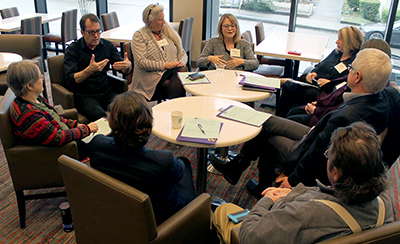
Participants were asked to form small groups to discuss the following questions. Examples of participant responses are listed below the questions.
What Models, Frameworks or Approaches They Use in Their Own Practice, How They Use Them, and the Factors That Influence the Value and Utility of the Models, Frameworks or Approaches
- There is not any one model that any university is using. Using the micro, miso, and macro level allows us to think about our models differently.
- There is a vast difference between having a law where an institution can get sued, verse an institution doing something out of the goodness of its own heart. What can we use to motivate institutions, companies, and people?
- As technology moves forward, things can be made more accessible easier, but there will also be more to be made accessible.
- Litigation and other big events can cause a culture shift to move towards accessibility. Faculty won’t prioritize accessibility without a reason or reward.
- Standardization is easier within K-12 due to state and federal standards and expected student completion. Each post-secondary institution can often run things differently.
- Academic freedom should be overridden by the need for access to content.
- There can be an absence of tools that can be used to make products accessible by default. All the software that comes on computers today does not have good accessibility built-in, and software needs user training to make documents accessible.
- I usually don’t have time to think about the reasons behind what I do. We kept coming back to the idea of universal design and how WCAG 2.0 can be made relevant to making all web content accessible.
- “Everyday accessibility” as an idea for the work we are doing every day and how we are specifically getting the work done.
- What is the function or purpose of a model? To explain functionality of practice or is it to create better practice? If a model is to explain practice, it needs to observe actual practice instead of just create the idea of a practice.
- Standards can sometimes be created without meeting the audience the message or model is for. Standards need to be pragmatic and palatable.
- Optimal accessibility—we can have a goal for ideal practice, but also understand what is realistic for practice. We don’t want to set something as unachievable, because then no one will even try.
- There is a lot of tensions between the two extremes—from the medical model to the social model, or academic freedom and standards.
- Students can be a great help in moving the grassroots movement further. Often, accessibility issues are left on the shoulders of individual students. Instead, we want to help students and move forward as a group, creating a coalition to advocate for accessibility.
Should we be using models and frameworks, or should we ditch this conversation entirely?
- I’m not sure if the models or frameworks help, but without them, we would have no way to share ideals and methods of practice.
- If a model is too prescriptive, it takes away the need of freedom within a culture. Not every part of a model is going to be worked out in the same way. Models need to be adaptable for a variety of cultures and environments. There will probably never be one model for all.
- Eventually you can put a hypothesis into a model and look at the efficacy of a model. You can never test a method if you don’t have a model for it. Models can be used to train and build around. Teachability and Testability.
- Accessibility is, at heart, a compliance issue. Security also is, at its heart, a compliance issue. By making a more generalized compliance roadshow, by partnering with general council and risk management, we can broaden our team to move accessibility further.
- We now have a compliance verse social justice, or moral issue verse economic issue. There are a variety of “hammers” to use to promote accessibility, and we don’t know which method is the right way to go.
- Models can grow and change—they are not stagnant disciplines to be used or not used.
- Faculty often want to see examples. If a model is just a theory, it’s harder to get people to sign on board with trying it.
- If we were bringing an idea to a fully new country with no background, how would we start it or bring it to them? What burdens do we carry with us that are avoided elsewhere?
- Maybe instead of one model, we need many micromodels. Inaccessibility is like a cancer—and there isn’t one way to treat or prevent cancer. Maybe we need many ways to treat and prevent inaccessibility.
- Low-hanging fruit can be hit easier. My unit offered to open the door to fix easy issues (creating templates, cleaning code, creating accessible PDFs, etc.), and that really invited people to come in and try to fix these problems.
World Café
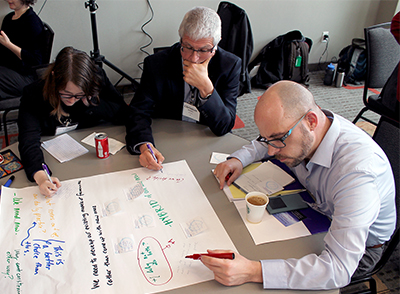
Participants were asked to read and write their responses and reactions to seven statements (derived from the previous day and half of discussions). The statements were rotated around the tables so that participants could add their own responses to the original question and respond to the responses of others if they wished. Questions focused on what research is needed to resolve the issues highlighted in relation to models and frameworks; what is needed to move practice forward and how research and practice might inform one another?
Each statement is presented below and followed by some of the responses.
An important part of the solution to accessibility and inclusion is to adopt both a top-down and bottom-up approach.
- Revolving door of champions/administrators
- YES
- Break that glass ceiling, but I think that’s only possible from the top
- Who’s the change agent? Spend time convincing them?
- Clear statement from the “top” might really help those at the “bottom”
- Reset the pyramid!
- Absolutely- this is how system change happens. One without the other is only a Band-Aid.
- Horizontal approach, solidarity not charity
- Yes. By using two opposite approaches you encourage people at all levels to be involved. This also contributes to more diverse perspectives being expressed and taken into account throughout the process. Follow-up question to think about...When trying to implement a bottom-up approach, how do you get the students who are traditionally in a more quiet, insubordinate role to create a push for change?
- I believe in bottom-up
- Give the “bottom” representation
- Does “bottom” include students and consumers?
- Definitely agreed! However, “top” needs to be fully active and engaged with the “bottom” = communication + collaboration between the two
- Tried the bottom-up model for many years. Ready to move to top-down. Conclusion - you need both as they bring different aspects to the solution to accessibility/inclusion
- Some schools can do top-down but any school can do bottom-up
- Value
- There can be two tops, 1 Government, 2. Organizational
- Flexibility, balance
- External forces...Government, compliance
- Both are important - it can depend on the institution which works best
- Of course! There must be highest level (funder/government) support all the way down to the individuals. Request an input on accessibility needs to push from both directions.
- We need buy-in
- (Hierarchy and equality) not only as a chain process, but interlinked and inter-active. Government to leadership to faculty to staff, student to faculty to leadership to government, society use of ICT exchange
- I agree. Would also like to see people at top explain their position to those lower down and vice-versa, from bottom up
- Resources and external drivers (legal, etc.)
A successful model for framework is one that stimulates a post-secondary education (PSE) institution to transform its systems and processes rather than enables it to carry on doing what it already does.
- Stimulates positive change
- Model can be aspirational
- A model can be an inspiration
- A model should educate and be not assume prior knowledge
- I like what Robert Prisig discusses in Lila where he talks about both static and dynamic quality; what needs to stay in function while changing cell structure regularly
- Maybe both! 1) Can describe current processes 2) could be designed to purpose systemic change. So an institution that wants to change should have 2 models/frameworks to describe what is status and what is desired
- With evaluation of results of change
- Yes! Nothing should be “enabled” - institutions should always aim for all students to have fully equal and successful participation of all students. A model should set an example that an institution can follow
- When there is buy-in YES!
- Developing the framework/model can still serve as a source of stimulation for the PSE. The process is important.
- Do models stimulate change? Or do models change because they respond to what is changing “out there” (e.g., new technology)
- A model or framework helps to structure process, communication, responsibilities, criteria, indications, measurements, etc.
- It is possible that a successful model is in place. Is change needed then?
- The framework/ model can’t be imposed but must be created within the PSE community itself
- Why does it have to be either or why can’t we stimulate new and support what works
- A model should be used as a guideline for step-by-step best practices
- Are there any truly successful models? Aren’t the models all more of theories about how something could work? Who decides what is successful/effective? What if what it already does is more effective than implementing a specific model
- I don’t think we have truly successful, appropriate, and effective models. If there were our work would have been done.
We need to develop our existing models and frameworks rather than come up with new ones.
- If our current model worked we wouldn’t be here
- Can we use existing models to inspire new models?
- Needs to adjust to change
- We need both—Why constrain ourselves either way?
- What are our existing models?
- I agree that we should further develop existing models and frameworks BUT we need to respond to missing context and develop new ones
- Models need time to grow and mature and take root. We need to reflect and assess whether the growth is still guiding our. We also need to consider the changing audience for the models … the early adoption/innovations vs. the more cautious adopter and slow to change
- HYBRID of old and new
- Learn from existing and decide then - if needed restart completely new
- Theory vs. practice > that is the question. We need to respect our different orientations and use them to have a balanced approach. Thus theory and practice = model
- Can sharing of our good practice create models
- Maybe stop worrying about models and abstractions and more daily practice.
- We need to develop our existing models to ensure that they are effective. However, using the same model all of the time risk becoming outdated and irrelevant in the presence of new technology
- What comes out of our daily practice?
- At what point do we decide an approach is broken? When litigation appears?
Adopting both a reactive and proactive approach to accessibility and inclusion is the best approach.
- Proactively reactive - anticipate problems even if you are proactive
- Plan for the proactive. Be ready for the reactive - should be part of the proactive plan
- Hybrid
- Some needs in some contexts cannot be anticipated.
- Need to plan for reactive processes - need full resource and support
- Need to monitor and measure reactive processes to see if they should be part of reactive or become part of proactive
- Who determines what reactive and proactive is? It should be more than black and white! We need grey!
- Proactive is always better but reactive approaches must be quick - like the U.S. Digital Service or the UK Government Digital Service - a quick turn-around - no waiting lists
- Proactive is the goal. Reactive is (and probably will always be) a necessity.
- There is still a place for both but we should aspire to just having accessibility without remediation or accommodation.
- Build in evaluations! Check points.
- Reactive comes from not being proactive.
- Proactive and reactive approaches are important - Proactive: think of possible issues that could arise. Reactive: thinking on your feet; reacting at the time. You cannot anticipate every possible issue, but some issues can be avoided or have a more effective solution with more forethought. Approaches can be more/less effective for different situations/environments/population. Proactive requires a greater base of knowledge in the beginning on a continuum.
- Explore the limits of both approaches. What is better done proactively? What is better done in reaction to?
- Proactive always is the best approach. However, sometimes you will have reactive approaches if the situation is unusual or unexpected.
- Navigate bureaucracy
- Proactivity is #1 and Reactivity is #2 because sometimes it might be too late to react.
- Learn from the reactive cases for continual improvement.
- If not proactive, will always have to be reactive.
- Who is proactive or reactive? Staff, faculty, student, leadership?
- Proactive would be best but we will always have to have a reactive approach.
- Sometimes a reactive approach can be better targeted at individual requirements
- Proactive in the wrong direction can bind resources (waste), which would be needed elsewhere (reactive).
- Proactive approach is not well developed.
- Rapid response cannot always predict new necessity.
- Fire prevention education - fire gets out, run, put it out
- Yes, UD and AT and other accommodations
- Technology changes rapidly
- We have no choice but to have both to address all problems.
The only models worth having or developing are those that are testable.
- Every model should be able to measure
- By testable - if you mean validated that’s not important for me. If you mean useable - that’s critical. For me a model needs to go beyond theory. In fact, some models may come out of practice - thus already “tested.” Are used to “describe” what’s already been done so others can replicate it.
- I agree
- Agreed!
- Diversify data, not numbers, but other things
- Need to evaluate outcome of use of model
- Can we isolate? Can we test as it is hard to isolate? Testing the model of outcomes are two different things.
- No: model can serve as an aid for thinking, developing, describing.
- It is always good to evaluate what you are doing so that you call adaptive/improve with feedback
- Some actions have positive tangible outcomes with no need to accurately measure those. Do we need a 98.2% level of compassion or could we just be content with an unspecified increase in compassion?
- I’m unclear on the statement. What does an untestable model look like? Wouldn’t any be testable?
- We need to optimize the model - we need to define the components. Maybe if we can test components in an expected model it look we evaluate components?
- Model components - define - test.
- People are not always data
- Always! Never!
- Who defines “testable”? How exactly do you determine how well it does on this test? If models are mainly theories, I think it is important to develop any effective models in order to take other ideas/perspectives into account. Maybe a model isn’t testable now, but it may be when built upon or in the future.
- It depends on how we define models! I think there is an important role for models to expand our vision of what we can be and do… so I disagree.
- Sometimes the really important things can not be tested! Maybe indicators if at all!
- Work on one thing at a time vs. all at once.
- Can be evaluated?
- Should be testable otherwise how do we know?
- Costs effective model - measure success
- People, technology, user skills
- Student feedback - qualitative, quantitative
- What are testing?
- Isn’t anything testable with some thought and creativity?
- Can it be replicated in different settings?
- Untrue - they’re also good for documenting processes and practices. The practice outputs and outcomes should be measurable.
- Bizarre
- Models used as a strategy have to prove their usefulness - not useful? Come in with a different/better model
- How do we measure “affective” benefits of UDL?
- “Got no data? It didn’t happen.”
- Data driven processes needed to measure results; to come up with directions for future development and research.
We don’t need one single model or framework, we need different ones for different problems, contexts or audiences.
- Comfort level changes based on context
- Maybe one common framework or template that provides the structure for multiple models to fit into. That way we’ll have a common language for discussion but relevance for different contexts and audiences.
- Hybrid.
- An issue with multiple models is choosing between them! purpose/context/audience needs to be clearly described
- Standards - customized - localization - possibilities ----> choose what works
- We need constant reflection and updating of dynamic models/frameworks
- … but elements of a good process model could work in a variety of contexts
- A set of models which are compatible. Developmental models <---> Models of operation. Models need to be adjustable to context. XXX model
- I think this is an important point. We need multiple models to fit different problems… but there has to be a unifying value or theory. They have to be compatible.
- Are these changes just different components of a model? But one model unlikely.
- Need: Micro, meso, macro models with different lenses/foci/contexts no “ring to rule them all” “Best practices”/compliance is a model
- I like the concept of levels of models. Having one overarching model with the capacity to be adapted in various scenarios can be useful for giving groups a starting point and an idea of how to adjust to meet their specific needs
- I think “best practices” are building blocks for models but not an actual model
- I am really not sure. If one model is flexible enough, perhaps one is enough. But a very inflexible model will break like the Tacoma-Narrows Bridge! How do we balance being prescriptive enough to be useful, but flexible enough?
- Some models will be inherently “better” -- who and how that’s decided is also an important consideration
- Something has to be set to have a model
- Everyone needs to say same thing for a model to work
- I don’t see how you can have just one model - things need to be flexible/adaptable to apply at a variety of places
- An overarching, broad framework could inform multiple tailored models
- Would a “meta-model” be an option? When do we drop/delete “unusable” models?
- How are models developed? What kind of data is used?
- What’s the focus and the function of models? Who is supposed to use the model?
We need a model that will guide senior managers regarding best practice in relation to policy, strategy and governance.
- Well-thought out guidelines that include the opinions/thoughts of people w/ disabilities (instead of/as a model)
- The administration needs to have human experience to see the impact.
- 1st need them to embrace a11y + UD.
- Senior managers need knowledge and need to be able to expand their knowledge
- Open minded and willing to change
- A model or a set of principles
- Never met a senior manager who developed policies, strategies based on a model of accessibility to IT. Maybe, budget student success, unions, etc.
- Do younger/lower level managers not need any guidance? Why do we need to call out specific manager, rather than implementing training for all managers/workers?
- Models cannot capture everything, need to convey to management importance of accessibility. Otherwise, they will work around problems with model as a guide.
- Worries - becomes “all talk” not action.
- Checklist approach
- Centralized accommodations support implementation
- Important for institution specific drives can be accounted for.
- Staff/HR policy
- What models are normal/acceptable for this audience? (business/management style of models?)
- What is a model? Wouldn’t a policy or guideline work?
- This model has to be embraced by a broader, institutional community.
- Model is too static a concept in terms of what would help senior managers- process sounds more dynamic and flexible.
- Policy Leadership Purchasing Training Remediation Retention Requirement
- Senior managers seem to be driven more by metrics (success, budget) than models. Accessibility is difficult to measure for the most part. This presents a challenge selling it to execs.
- Broad models “so they are applicable”
- Inform model
- Department policies
- Define operationalizing - best practice - policy - governance - strategy
- Managers training strategies (people)
- Must be continuous training ---> real outcomes
- How to measure outcomes
- I appreciate the focus on practice as it informs policy
- Needs to be unique to each school.
Overview of World Café Outputs and Discussion on Where to Go Next Regarding Research Plans for the Group
Facilitated by Jane
Questions presented followed by some of the responses are presented below.
What have you gotten out of the last few days, what are your thoughts on models and their use? Where are they too theoretical and where are they practical? Where does it lie for top-down and bottom-up, or proactive verse reactive? What are the conclusions we’ve come up with?
- We need more data—the efficacy of models and accessibility should be based on data.
- What counts as data? Data is not necessarily numbers, it can be observable practice or interviews, or it can be different statistics based on studies.
- In the paper I wrote, the 9 models I identified, some were pulling from case studies. Does that count as data?
- Making accessibility improvements is difficult, because accessibility is not a switch that can be turned on and off. We don’t know if a product will ever be perfectly accessible. Accessibility is a process. It’s hard to collect data on a process and an improvement.
- We had a discussion about how data can be measured as users and as technology. There’s way to measure a tool or a website but measuring people is harder. Separating these two may be necessary.
- Do we want data to develop models or data to evaluate models? It’s kind of the chicken and the egg scenario.
- We aren’t necessarily measuring accessibility, but the effectiveness of a model.
- A model has some facts to measure. For example, if you’re applying universal design to a course, you could measure how students do in a course verse students who aren’t given universal design in a course.
- Senior management is not driven my models, but my metrics. Measuring accessibility is difficult. Senior management wants to know the number of accessibility issues within a software, not an abstract discussion about models.
- If we have a model and we try to implement, we can measure how well we implement something but not necessarily measuring the model itself. We can make a conclusion based on how well the model is implemented or methods of implementation but not the model itself.
- Does this assume the model is working?
- But if the concept is implemented, then I can measure only that implementation not the actual concept itself. If someone implements it a different way, then it may work better or worse.
- Data that helps us come up with models, data that tests a hypothesis, and data that evaluates how we use and implement a model.
What will you do when you go back to your day job?
- As a student leading a disabilities group, this has opened my eyes for how we can use technology in our meetings. We’ve never taken the time to see how we can be more inclusive using technology, and now I’ve realized how important it is.
- We’ve brought together different people in different roles and interest.
- Time for us to really start curating the models that exist. We have a lot of organic models being used without labels or names or instruction. It seems important that we spend some time really analyzing this work and really sketching out what we’re doing and how we’re doing it and where we can improve or change.
- I noticed that a lot of us are articulating models even though we never saw them as models before. There is a need for curating these “models.”
- Funding can bring weight to it and help connect institutions. Could an organization like AHEAD help curate models within institutions? Could institutions spend the time sketching out what they are doing and compare them, through an organization like AHEAD? People can often crave a way to have their work be acknowledged, and this could be a way it is done.
- I would love to take our different practices that are in place and map them together and see how they compare.
- As a teacher, I have written down notes about my own teaching practices and how to improve those. I have a clearer understanding of where to go in my research, especially from the panel discussions.
- I want to talk to my students who are studying ICT and technology and see if I can appeal to them on how they can include accessibility in their own teaching and educational pursuits.
- From a student perspective, there are many influential universal design models. Please don’t regard a student with a disability as an accessibility specialist—all people with disabilities are different and students with disabilities often don’t know how to accommodate others, let alone even the best way to accommodate themselves.
- Look at the marriage between ICT and AT: if the ICT doesn’t have accessibility features, it will need AT to use it. For example, I use Zoom or a screen reader when using Google Docs. Sometimes AT can cause ICT to malfunction or crash.
- We have specific models for UDL/UDI. How technology is actually used within a specific class. I want to have the guidelines to analyze widely used technologies in conjunction with AT to better have an idea of how it works and create data and a professional judgment/subjectivity.
Symposium Participants
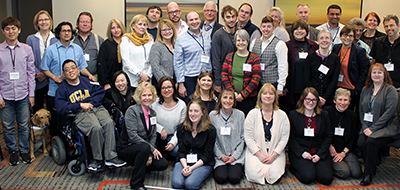
Stakeholder groups represented in the symposium included
- student service leaders and administrators,
- faculty members,
- students, and
- professional organizations.
The following individuals participated in the symposium.
Karen Alkoby
Gallaudet University
The United States of America
Shannon Aylesworth
University of Wisconsin-Milwaukee
The United States of America
Cynthia Bennett
University of Washington
The United States of America
Jeffrey Bigham
Carnegie Mellon University
The United States of America
Lisa Brandt
Portland Community College
The United States of America
Christian Buehler
Technical University, Dortmund
Germany
Sheryl Burgstahler
University of Washington
The United States of America
Anne Carpenter
The Evergreen State College
The United States of America
Deb Castiglione
University of Kentucky
The United States of America
Chetz Colwell
The Open University, UK
United Kingdom
Dan Comden
University of Washington
The United States of America
Tim Coughlan
The Open University, UK
United Kingdom
Lyla Crawford
University of Washington
The United States of America
Markus Deimann
FernUniversität, Hagen
Germany
Joseph Feria-Galicia
UC Berkeley
The United States of America
Catherine Fichten
Dawson College and McGill University
Canada
Björn Fisseler
FernUniversität, Hagen
Germany
Alan Foley
Syracuse University
The United States of America
Alice Havel
Dawson College
Canada
Doug Hayman
University of Washington
The United States of America
Tali Heiman
The Open University, Israel
Israel
Samantha Johns
Portland State University
The United States of America
Dana Kaspi-Tsahor
The Open University, Israel
Israel
Laura King
Dawson College
Canada
Howard Kramer
AHEAD / University of Colorado
The United States of America
Raja Kushalnagar
Gallaudet
The United States of America
Megan Lawrence
Microsoft
The United States of America
Jonathan Lazar
Towson University
The United States of America
Elizabeth Lee
University of Washington
The United States of America
Emanuel Lin
UCLA
The United States of America
Lynn Lumens
North Carolina State University
The United States of America
Patricia Malik
University of Illinois
The United States of America
Dorit Olenik-Shemesh
The Open University, Israel
Israel
Hadi Rangin
University of Washington
United States of America
Grey Reavis
North Carolina State University
The United States of America
Cyndi Rowland
Utah State University
The United States of America
Sally Scott
AHEAD
The United States of America
Jane Seale
The Open University, UK
United Kingdom
JooYoung Seo
Pennsylvania State University
The United States of America
Christian Vinten-Johansen
Pennsylvania State University
The United States of America
Resources
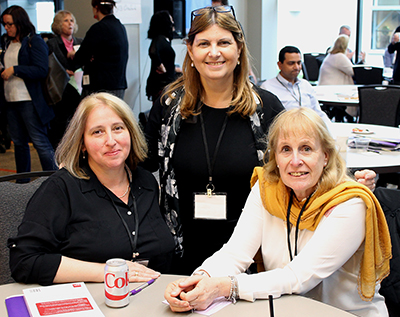
The following are resources from the organizations within this partnership and collaborators who attended the symposium.
Disabilities, Opportunities, Internetworking, and Technology
The DO-IT (Disabilities, Opportunities, Internetworking, and Technology) Center is dedicated to empowering people with disabilities through technology and education. It promotes awareness and accessibility—in both the classroom and the workplace—to maximize the potential of individuals with disabilities and make our communities more vibrant, diverse, and inclusive.
Adaptech Research Network
This Network consists of a team of academics, students and consumers. Adaptech conducts research involving college and university students with a variety of disabilities in Canada. Adaptech is based at Dawson College in Montreal and has been in existence since 1996.
Securing Greater Accessibility
A program of work embedding accessibility for disabled students into the curriculum at The Open University, UK. The work includes an Accessibility Referrals Panel, and training for Faculty Accessibility Specialists.
Additional Resources provided by Jonathan Lazar
Making the Field of Computing More Inclusive: Article published in Communications of the ACM about making the field of computing more inclusive for people with disabilities. Plus an additional video on Youtube.
Jonathan Lazar: Locked Out - Investigating Societal Discrimination against People with Disabilities Due to Inaccessible Websites (video).
Lazar, J., Goldstein, D. F., & Taylor, A. (2015). Ensuring digital accessibility through process and policy. Amsterdam; Boston: Morgan Kaufmann Elsevier.
Lazar, J., Stein, M. A., & Brewer, J. (Eds.). (2017). Disability, human rights, and information technology. Philadelphia: University of Pennsylvania Press.
Acknowledgments
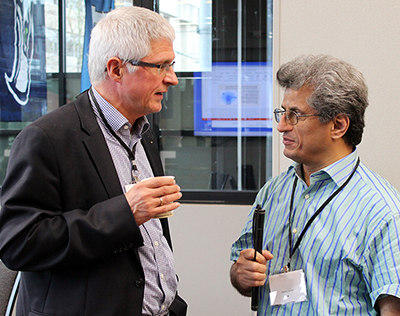
Funding provided by The Leverhulme Trust and AccessComputing (National Science Foundation Grant #CNS-1539179). Any opinions, findings, and conclusions or recommendations expressed in this material are those of the symposium presenters and project staff and do not necessarily reflect the views of the funders.
Copyright 2017 University of Washington. Permission is granted to copy this publication for educational, noncommercial purposes, provided the source is acknowledged.


